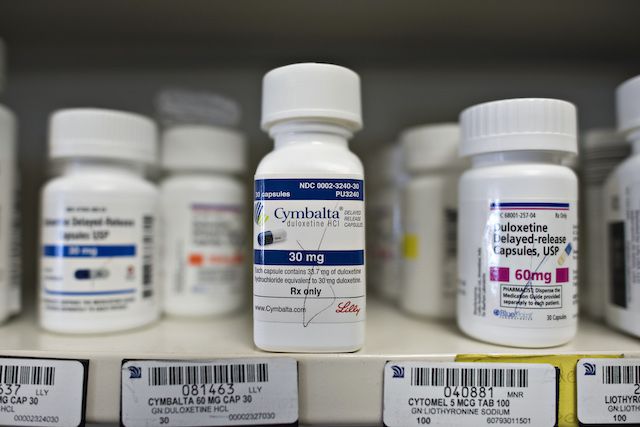Cymbalta Price with Insurance, Cymbalta is a brand-name medication that contains the active ingredient duloxetine. It’s primarily used to treat major depressive disorder, generalized anxiety disorder, fibromyalgia, and chronic musculoskeletal pain. It’s part of a class of medications known as serotonin-norepinephrine reuptake inhibitors (SNRIs), which help balance certain natural substances in the brain.
Mechanism of Action
Cymbalta works by influencing the brain’s chemical messengers, serotonin and norepinephrine. These neurotransmitters are associated with mood regulation and pain perception. By inhibiting their reuptake, Cymbalta helps increase their availability in the brain, thus improving mood and reducing pain.
Conditions Treated by Cymbalta
Beyond depression and anxiety, Cymbalta is instrumental in managing chronic pain conditions like fibromyalgia. It is also prescribed for neuropathic pain associated with diabetic peripheral neuropathy. Each condition requires careful assessment by healthcare providers to determine the appropriateness of Cymbalta as a treatment option.
Side Effects and Considerations
As with any medication, Cymbalta comes with potential side effects. Common ones include nausea, dry mouth, and fatigue. More severe side effects could involve liver damage or increased suicidal thoughts, particularly in young adults. Patients should discuss their medical history with their doctor to mitigate risks.
The Base Cost of Cymbalta
Understanding the base cost of Cymbalta is the first step in navigating its price with insurance. Without insurance, the price can be quite high, and it varies depending on the pharmacy and location. On average, the retail price for a 30-day supply of 60 mg capsules can range from $300 to $400. However, prices can fluctuate based on dosage and quantity.
Factors Affecting Retail Pricing
The pricing of Cymbalta can be influenced by several factors such as geographic location, pharmacy type, and market demand. Urban areas might see higher prices compared to rural locations. Additionally, chain pharmacies may offer different pricing than independent ones due to their purchasing agreements.
Dosage and Quantity Variations
The cost of Cymbalta can also depend on the prescribed dosage and quantity. Higher dosages or larger quantities typically increase the price. Patients should consult with their healthcare provider to determine the most cost-effective dosage that still meets their treatment needs.
Seasonal and Economic Influences
At times, economic factors such as changes in healthcare policy or pharmaceutical supply chain disruptions can affect Cymbalta’s base cost. Patients should stay informed about such changes as they can impact their medication expenses unexpectedly.
Cymbalta Price with Insurance
How Insurance Affects Cymbalta Pricing
Insurance coverage can significantly reduce the out-of-pocket cost for Cymbalta. Most health insurance plans cover prescription medications, but the extent of coverage can vary. Here’s how insurance typically affects Cymbalta costs:
- Copayments: With insurance, you may have a fixed copayment for each prescription refill. This copay can range from $10 to $50, depending on your plan.
- Deductibles: Some insurance plans require that you meet a deductible before they start covering medication costs. If you haven’t met your deductible, you might pay more initially.
- Tiered Pricing: Many insurance plans use a tiered pricing system for medications. Cymbalta might be classified as a higher-tier drug, which could result in a higher copayment or coinsurance rate.
Copayment Structures
Copayments are predetermined fees that you pay for each prescription fill. These are typically lower than the medication’s full cost. However, the amount can vary based on whether Cymbalta is considered a preferred medication on your insurance plan’s formulary. Understanding your plan’s formulary can help you anticipate copayment amounts.
Deductible Considerations
A deductible is the amount you must pay out-of-pocket before your insurance coverage kicks in. If Cymbalta is one of the first medications you’re purchasing within a policy year, you might need to cover the full cost until the deductible is met. Once the deductible is satisfied, your insurance will cover a larger portion of the cost.
Tiered Pricing and Formulary Placement
Insurance plans often categorize medications into tiers that dictate pricing. Cymbalta’s placement in a higher tier can mean higher costs unless your plan offers exceptions or discounts. Formulary placement is influenced by factors such as the availability of generic alternatives and the drug’s efficacy.
Factors Influencing Cymbalta’s Price with Insurance
- Plan Type: Whether you have an HMO, PPO, or another type of plan can affect your costs.
- Pharmacy Network: Using a pharmacy within your insurance network can reduce costs.
- Generic Options: Duloxetine, the generic version of Cymbalta, is often cheaper and might be preferred by your insurance plan.
Understanding Different Plan Types
The type of health insurance plan you have can significantly impact your costs. HMOs often require you to use network pharmacies and get referrals for specialists, potentially keeping costs down. PPOs offer more flexibility in choosing healthcare providers but might come with higher out-of-pocket expenses.
Importance of Pharmacy Networks
Insurance providers often establish networks of preferred pharmacies. By using these network pharmacies, you can benefit from negotiated prices, reducing your out-of-pocket expenses. It’s advisable to check if your pharmacy is in-network to avoid unexpected costs.
Role of Generic Duloxetine
Generic medications like duloxetine are typically more affordable than brand-name versions. Insurance plans often encourage the use of generics to contain costs. Patients should discuss with their healthcare provider to ensure the generic version is a suitable option for their treatment.
Cymbalta Price Comparison

Comparing prices between pharmacies and considering generic options can save money. Here are some tips for effectively comparing Cymbalta prices:
Use Online Tools
Websites and apps like GoodRx provide price comparisons across different pharmacies. These tools can offer valuable insights into potential savings and inform your purchasing decisions. By entering your location and prescription details, you can quickly compare prices and identify cost-effective options.
Check with Your Pharmacist
Sometimes pharmacists can offer insights into cost-saving options or discounts. Engaging with your pharmacist can reveal potential discounts not listed online. They might also suggest alternative medications or provide information on pharmacy-specific savings programs.
Consider Generic Duloxetine
The generic version is typically less expensive and equally effective. Switching to duloxetine can significantly reduce your medication expenses. Discussing this option with your healthcare provider can ensure you still receive the necessary therapeutic benefits.
Explore Pharmacy Membership Programs
Many pharmacies offer membership programs that provide discounts on prescription medications. Enrolling in these programs can lead to substantial savings on Cymbalta. Researching and comparing membership benefits can help you choose the most advantageous option.
Cymbalta Copay Assistance Programs
If you’re struggling with the cost of Cymbalta, several assistance programs are available:
Manufacturer Assistance
Eli Lilly, the manufacturer of Cymbalta, offers a patient assistance program for eligible individuals. This program provides Cymbalta at a reduced cost or even free for those who qualify. Eligibility often depends on income level and insurance status, so contacting Eli Lilly can provide more details.
Non-Profit Programs
Organizations like NeedyMeds or RxHope may provide additional resources for financial assistance. These non-profits collaborate with pharmaceutical companies to make medications more accessible. Their websites often include comprehensive lists of available assistance programs and application guidance.
Coupons and Discounts
Pharmacy discount cards and online coupons can also help reduce costs. Websites like RxSaver and SingleCare offer printable coupons that can be presented at pharmacies for immediate savings. Regularly checking these platforms can help you find the latest discounts on Cymbalta.
Consideration of State and Federal Assistance
Some patients may qualify for state or federal assistance programs that offer medication coverage. Medicaid and Medicare Part D are examples of programs that can reduce prescription costs for eligible individuals. Understanding your eligibility and the application process can open up additional avenues for support.
Cymbalta Insurance Coverage Insights
Understanding the nuances of your insurance policy is crucial in managing Cymbalta costs. Here are some insights:
Review Your Policy
Carefully read your insurance policy to understand your prescription drug coverage. Policies can be complex, with specific terms regarding medication coverage, copayments, and deductibles. Familiarizing yourself with these terms can prevent unexpected expenses and ensure you are adequately covered.
Contact Your Insurer
Don’t hesitate to call your insurance provider for clarification on Cymbalta coverage. Customer service representatives can provide detailed information about your benefits, formulary, and any recent changes to your plan. This direct communication can resolve ambiguities and assist in financial planning.
Annual Review
Insurance plans can change annually, so review your plan each year to see how Cymbalta coverage might be affected. Open enrollment periods are ideal times to evaluate your plan’s coverage and make adjustments if necessary. This proactive approach ensures you maintain optimal coverage for Cymbalta and other medications.
Explore Alternative Insurance Options
If your current insurance plan does not adequately cover Cymbalta, exploring alternative options might be beneficial. Some plans offer better prescription benefits or lower copayments for specific medications. Consulting with an insurance advisor can help you identify plans that align with your healthcare needs and budget.
Conclusion
Understanding the costs associated with Cymbalta and how insurance coverage can help reduce these costs is essential for anyone relying on this medication. By exploring different pricing strategies, assistance programs, and understanding your insurance policy, you can better manage your prescription expenses. Always consult with healthcare professionals and insurance providers to ensure you’re getting the best possible information and support.
Navigating prescription costs can be complex, but with the right information and resources, you can make informed decisions about your healthcare expenses. Remember, proactive engagement with your healthcare providers and insurance companies is key to optimizing your medication management and ensuring affordability.


